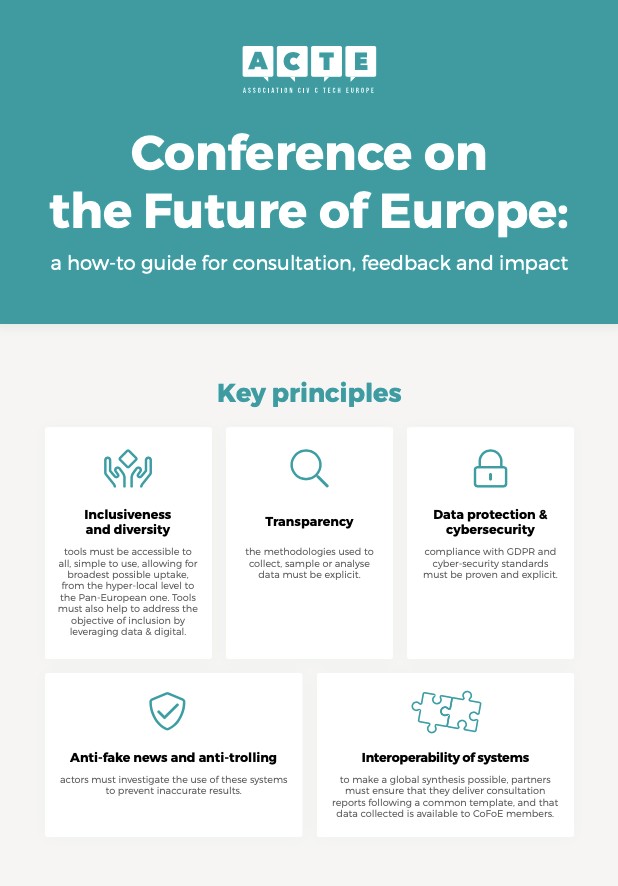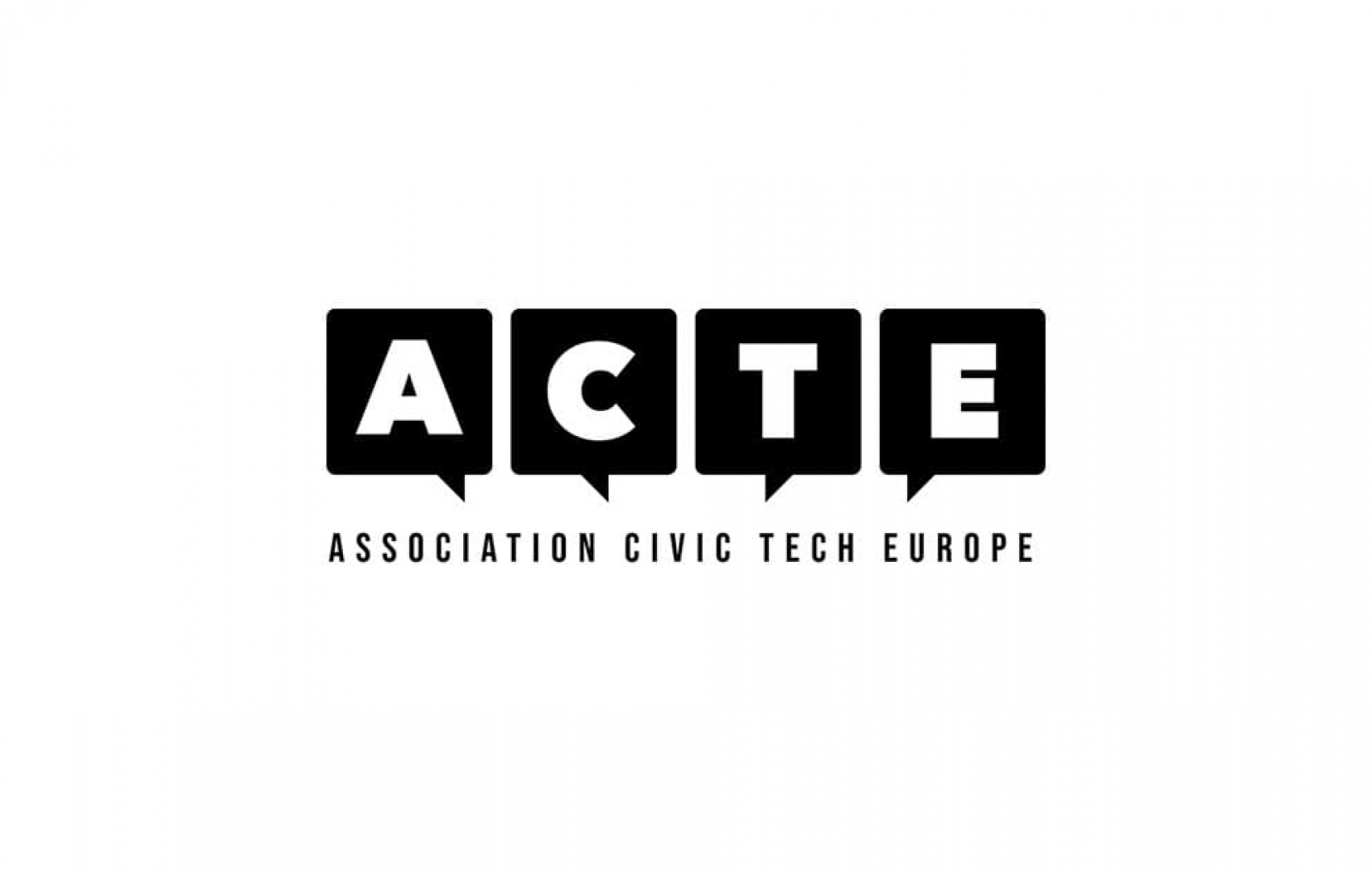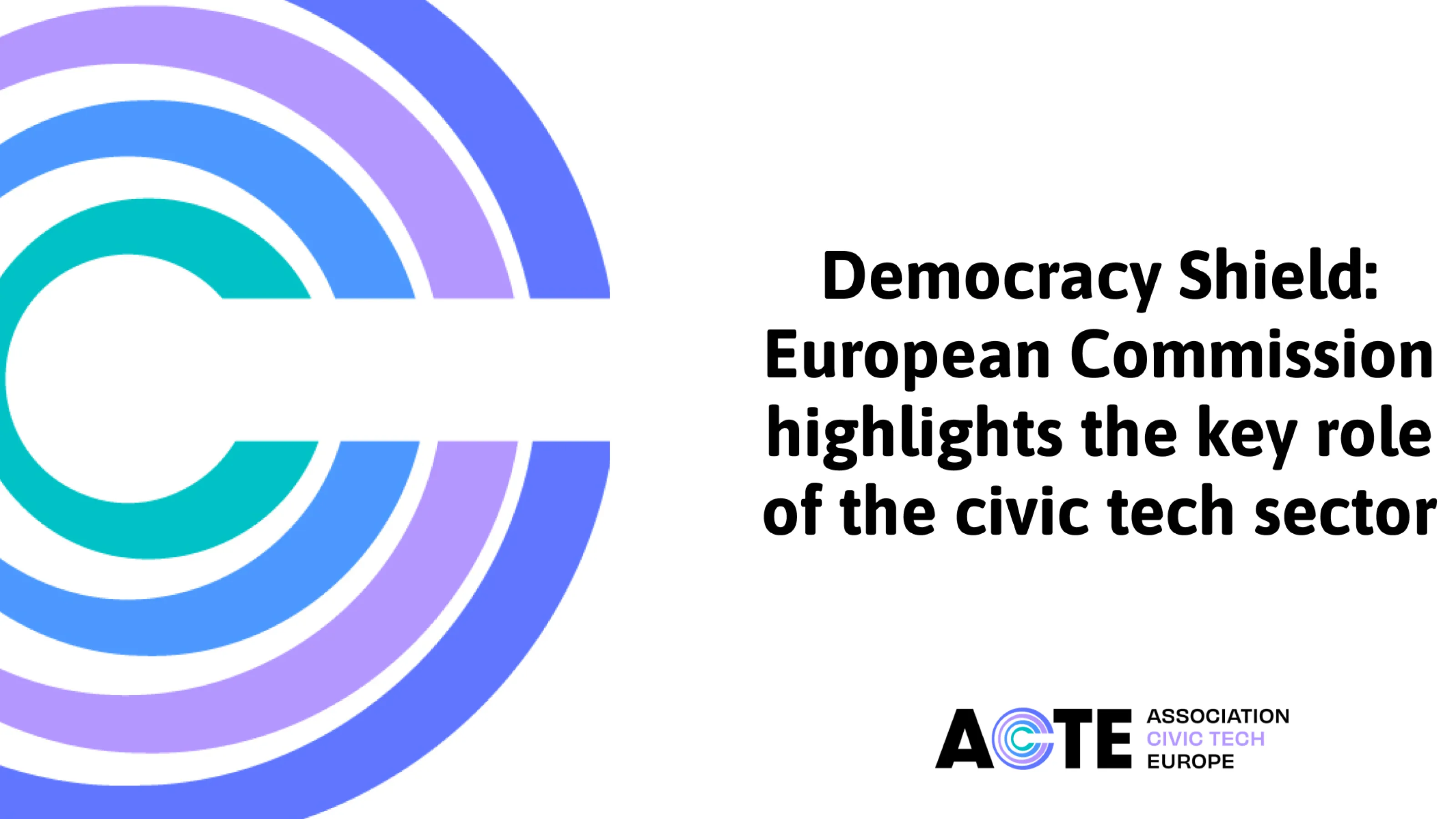INFOGRAPHY
Executive summary
The Conference on the Future of Europe seeks to understand what citizens want from the European institutions. ACTE proposes a step-by-step approach to understand, analyse, but also implement the outcome of the Conference.


Detailed phases
Phase 1: Massive & Inclusive high-level consultations
- What: a large-scale, multilingual consultation effort asking millions of European citizens about their priorities for “the future of Europe”
- Why: identify what are the main priorities for European citizens to issue key “Citizen Priorities”
- How: structure around one broad question e.g., “What are your priorities for the Future of Europe?” asked through digital and non-digital means (includes: “idea box”, online discussions, polling/questionnaire, voting, interactive mapping...) in all 27 Member States. Gather proposals and votes on those proposals.
- High level reach on social media, news networks and local ambassadors.
- Pay particular attention to profiles and zones to meet people feeling “left out” or excluded, using OpenData, local opendata, social networks data, and local ambassadors.
- Each consultation must deliver a report of key “Citizen Priorities” with common templates
- Who: digital consultation platforms & on the field consultations When: during the first months of the CoFoE
Phase 2: Creation of the Conference’s “Citizen Agenda”
- What: a global and statistically robust synthesis of key “Citizen Priorities” leading to the writing up of the “Citizen Agenda” reflecting those findings, feeding back to participating and non-participating citizens
- Why: producing and publishing bottom-up insights key “Citizen Priorities” from complementary to the EU Strategic Agenda, building up momentum for expanded participation (loyalty-building)
- How: European-built analysis technology with data visualisation tools Who: data analysts and scientists When: following the massive consultation, with the results of the consultation being announced at a dedicated session e.g.,
- cross-country, cross-demographic visual representation of results
- analysis and interpretation from various experts across the political spectrum.
- justification for areas chosen for the ‘Citizen Agenda’
Phase 3: In-depth consultation by participation
- What: based on the ‘Citizen Agenda’, a participatory and deliberative process enabling detailed exploration of recommended topics and priorities
- Why: create a mature and thorough picture of citizen’s needs in specific areas, away from the politics of the day, to prepare on-the-ground experimentations
- How: deliberative processes such as citizen-assemblies, consensus-building exercises, co-construction
- Who: deliberative, consensus-building consultation platforms
- When: during the last six months of the CoFoE
Phase 4: Recommendation and definition of the “Impact Agenda” (PoCs)
What: publication of consultation results and launch of an EU-backed challenge to tackle issues identified in conjunction with the EU Strategic Agenda
Why: activate actors to turn insights and ideas into practical solutions which impact people’s lives
How: create an operational cell equipped with a budget to issue up to 12 challenges based on Phase 3, invite bids from private, public and third-sector organisations across Member states to propose solutions, and select them and set up an exploration phase
Who: European Commission and partners, Data management platform / community engagement platform to provide a feedback to every citizen
When: in the six-eight months following the CoFoE
Phase 5: Institutional implementation of the “Impact Agenda” (PoCs)
What: implement solutions as Proof of Concept picked as a result of the challenges published in Phase 4, in coordination with the EU Strategic Agenda
Why: provide concrete solutions to European citizens that move the needle on the issues they have themselves identified and co-created
How: set up a PoC testing phase with willing Member states, regions, or localities which come forward, and equip them with a methodology to assess the PoC and budget to see it to completion. Use digital tools to organise and empower the community of local ambassadors with material, database etc.
Who: Partners and European Commission
When: twelve months following phase 4
e.g.,
- My Europe app
- Local EU ambassadors program
- Debates at the European Parliament on Phase-4 proposals




